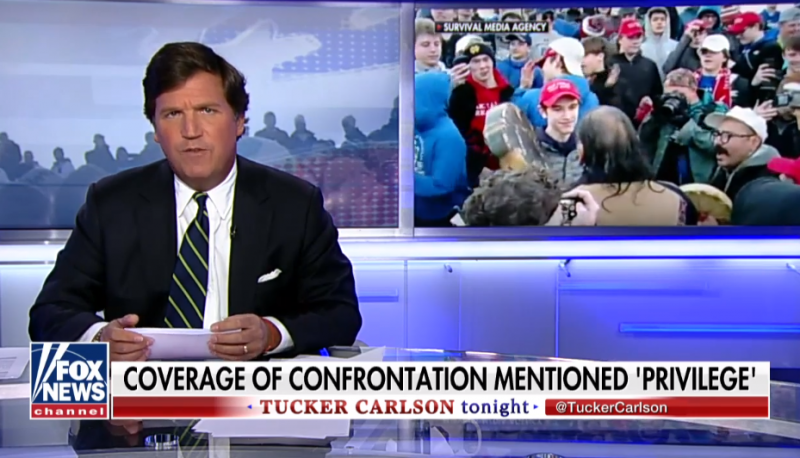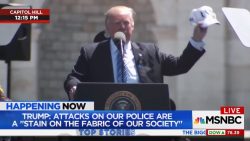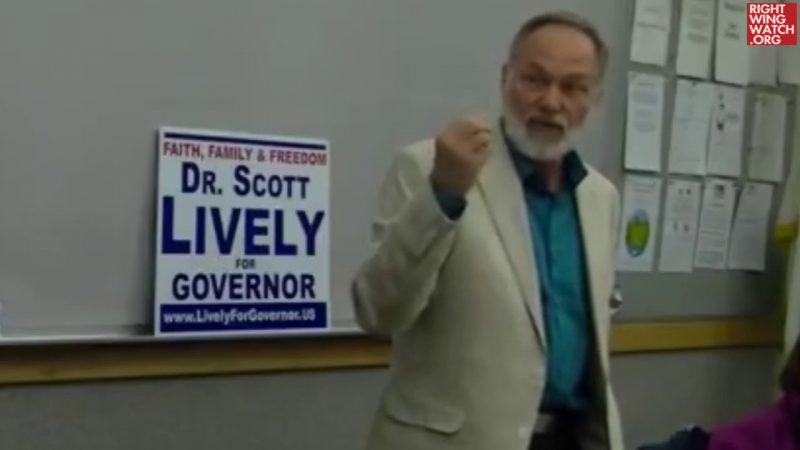In a video that went viral, a group of students from Covington Catholic High School in Kentucky appeared to mock indigenous activist Nathan Phillips, who encountered the teens at the Lincoln Memorial in Washington, D.C., after participating in last weekend’s Indigenous Peoples March. The teens had just taken part in the annual March for Life, a parade of Catholic high schools and right-wing groups who oppose reproductive rights and hope to overturn Roe v. Wade, the 1973 Supreme Court decision that made abortion legal in all 50 states. After the video spread on Twitter over the weekend, the teens’ families hired a communications firm to launch multi-level public relations campaign to wage war against the press.
The viral video shows a young man who has publicly identified himself as Nicholas Sandmann, grinning and standing silently, facing Phillips, just inches from the Omaha tribe elder’s face, while Phillips plays a drum and sings. Sandmann’s classmates parody Phillips as he plays. Twitter has suspended the account that first sent video of the incident viral. Since that video achieved virality, more video clips of the events that day have emerged.
With each new video clip, right-wing hucksters alleged there was additional proof that the Covington Catholic boys should be exonerated for their display, despite the fact that none of the subsequent video clips prove that the boys did not demonstrate disrespectful behavior toward Phillips—rather, all video evidence reaffirmed that interpretation. What the clips did do, however, is provide documentation of verbal harassment of the boys by demonstrators from a Black Hebrew Israelite group prior to their encounter with indigenous activists. Despite the fact that additional footage showed the kids had been riled up before encountering Phillips, the clips do not change the facts of what happened after they did.
A response to the viral video first launched in a part of right-wing internet that could be aptly likened to a landfill and ascended into the stratosphere. The pushback campaign first took off with fame-hungry media personalities like YouTube hoaxer Joey Salads, climbed through a mill of pro-Trump propagandists, thrust itself into “respectable” conservative outlets, and eventually reached its cruising altitude at Fox News—an elevation where President Donald Trump encountered the narrative and tweeted out its message to the nation.
Nick Sandmann and the students of Covington have become symbols of Fake News and how evil it can be. They have captivated the attention of the world, and I know they will use it for the good – maybe even to bring people together. It started off unpleasant, but can end in a dream!
— Donald J. Trump (@realDonaldTrump) January 22, 2019
Right-wing activists created and spread hashtags like #VerifiedBullies and #StandWithCovington. Others began building a database of verified Twitter users who had criticized the teens—and in extreme cases provoked harassment and violent rhetoric against the students—and demanded that those users be suspended and, if they were media professionals, to be fired. So far, that campaign has cost at least one media professional their job. All the while, right-wing personalities siphoned off the outrage campaign to promote their own personally branded media efforts.
Charlie Kirk, president of Turning Point USA, asked how “anyone still trust the media after this weekend” and declared that journalism “is dead.”
How could anyone still trust the media after this weekend?
Fake “bombshell” built on lies with anonymous sources that was debunked by the special counsel
The attempted public lynching of high school kids on lies just because they wrote Trump hats
Journalism is dead.
— Charlie Kirk (@charliekirk11) January 22, 2019
The president’s adult son, Donald Trump Jr., leaned into the campaign on Twitter, citing Posobiec, Kirk and others to question why major accounts had not been banned:
Waiting for you to do the right thing and retract this… oh who am I kidding? You couldn’t care less about what’s right or true, just your leftist narrative. https://t.co/RMDxcdzMi1
— Donald Trump Jr. (@DonaldJTrumpJr) January 22, 2019
Mike Cernovich used the counter-narrative about the teens to assert: “This is why you must never believe any story you read about Trump or his supporters. Period.”
The media targeted high school kids, they laid down the full power of the press to crush them.
And the stories were fake.
This is why you must never believe any story you read about Trump or his supporters. Period.
— Mike Cernovich ??? (@Cernovich) January 20, 2019
Tim Pool, an indie journalist, declared that it “has never been more apparent who the real fascists are.”
It has never been more apparent who the real fascists are
— Tim Pool (@Timcast) January 21, 2019
Even Ben Shapiro of The Daily Wire eventually came around to pushing back on behalf of the Covington Catholic teens, despite having condemned their actions prior.
The activists have enlisted the help of Robert Barnes, an attorney who assisted Gateway Pundit writer Cassandra Fairbanks in filing a defamation lawsuit against a reporter who posted on Twitter that Fairbanks made a “white power hand gesture” in a photo. That lawsuit was dismissed.
At the time of publication, Fairbanks is a prominent voice pushing in defense of the Covington Catholic teens, publishing 15 articles about the incident at The Gateway Pundit over the weekend. In those articles, she defends the teens against their liberal critics.
Pardes Seleh, a former producer for Laura Ingraham that now spins for MAGA world as a writer at Mediaite, penned a piece about Twitter accounts that removed posts about the Covington Catholic students. Robby Soave at Reason wrote that additional video footage of the encounter “adds important context that strongly contradicts the media’s narrative,” and he cast the blame for the students’ behavior on the nearby Black Hebrew Israelites who were accosting the teens before Phillips entered the scene. Soave writes that there was “shockingly little evidence of wrongdoing unless donning a Trump hat and standing in a group of other people doing the same is now an act of harassment or violence.”
Soave’s article was picked up by Sen. Rand Paul of Kentucky, who shared it on Twitter:
Unfortunately there is too often a rush to judgement from our media and social media these days. We should stop and look at the facts first.
The Media Wildly Mischaracterized That Video of Covington Catholic Students. https://t.co/NATjAQNqVW
— Senator Rand Paul (@RandPaul) January 21, 2019
Joe Simonson, a media reporter at The Daily Caller, wrote that media figures dogpiled on the high schoolers while “still reeling from the wave of criticism” surrounding a BuzzFeed News report and accused them of focusing on the student’s smirk because it “triggered painful memories of lonely prom nights and failed junior varsity sport tryouts.” At the time of this post, The Daily Caller featured seven unique stories on its homepage about the Covington Catholic teens.
And it probably goes without saying that the group of teenagers was also defended by unabashed white nationalists and racists.
As Laura Wagner pointed out at Deadspin, the artificially created outrage campaign grew so overpowering that it prompted sympathies from reporters at The New York Times, CNN, The Atlantic, and HuffPost. Wagner wrote:
These people are willing to give the screaming mob of white teens the benefit of the doubt because it distinguishes them from the emotion-driven hordes. It’s something like virtue signaling, but instead of attempting to signal that they hold any type of moral or ethical principles, these people are attempting to show that they are willing to be chastened, and so are thoughtful. I can admit when I’m wrong, they say, so you can always trust me.
As the story has dragged on and additional reporting has been done, the disinformation campaign has become more apparent. Charlie Warzel noted: “it’s an information war all the way down.”
it’s an information war all the way down
— Charlie Warzel (@cwarzel) January 22, 2019
NBC reporter Ben Collins noted that mainstream media voices attempted to find a false center between a mostly true account of what happened and a dishonest counter-narrative.
Thing 1 came out, was eventually largely supported and true.
Thing 2 came out, was wildly, intentionally misconstrued by professional provocateurs to say that Thing 1 was a lie.
Mainstream voices moved to center of Thing 1&2.
More reporting showed Thing 1 was closer to the truth.— Ben Collins (@oneunderscore__) January 22, 2019
MSNBC host Chris Hayes remarked, “I haven’t seen the broad conservative coalition as fired up about a story since Kavanaugh”:
I haven’t seen the broad conservative coalition as fired up about a story since Kavanaugh. Pretty interesting.
— Chris Hayes (@chrislhayes) January 22, 2019








